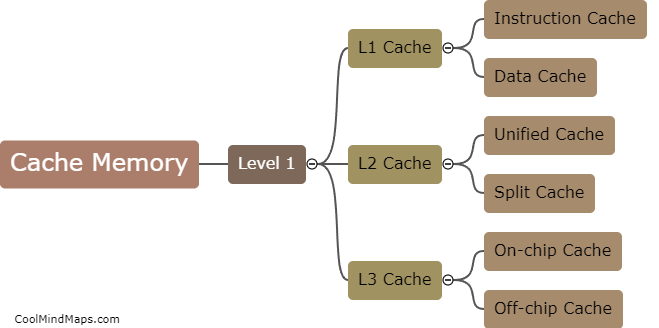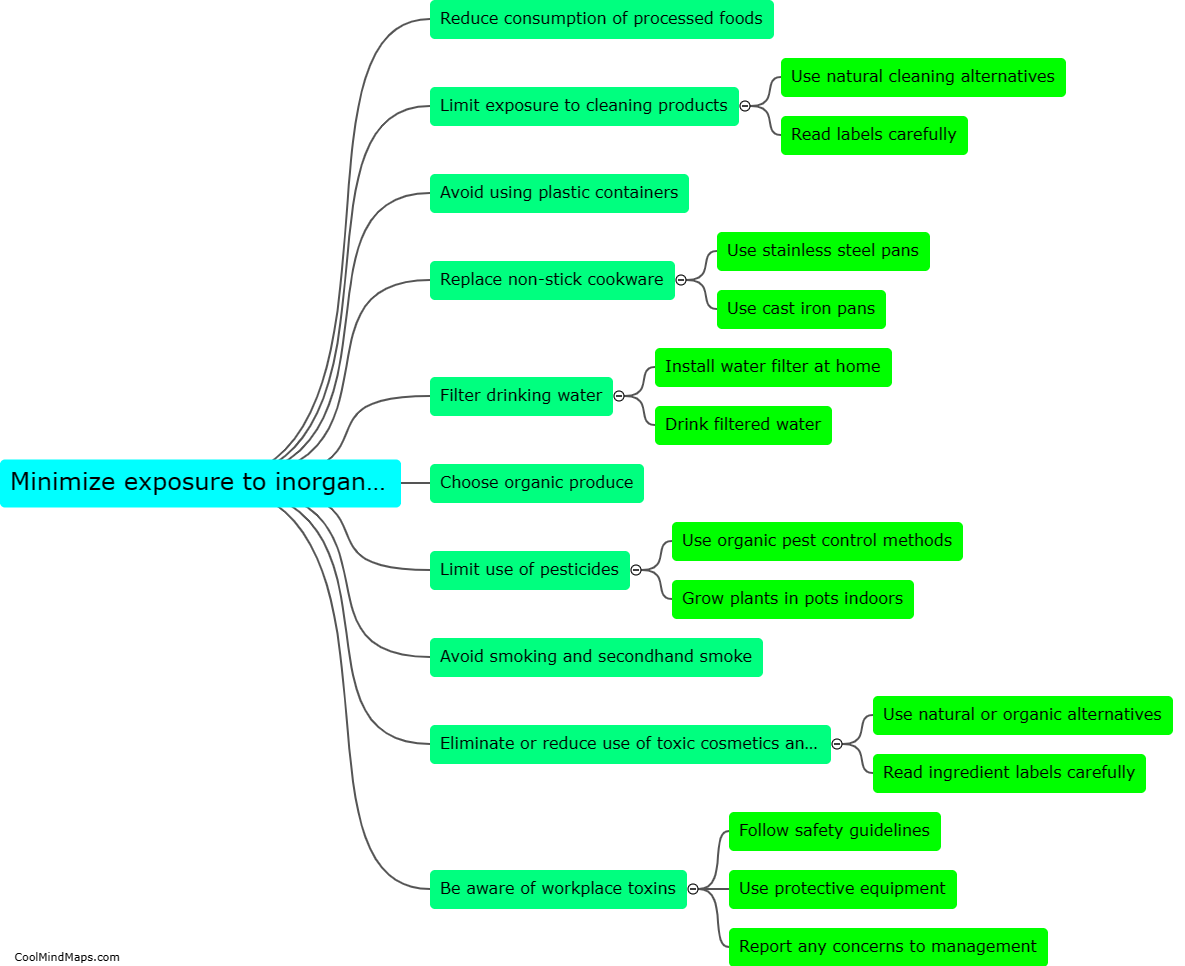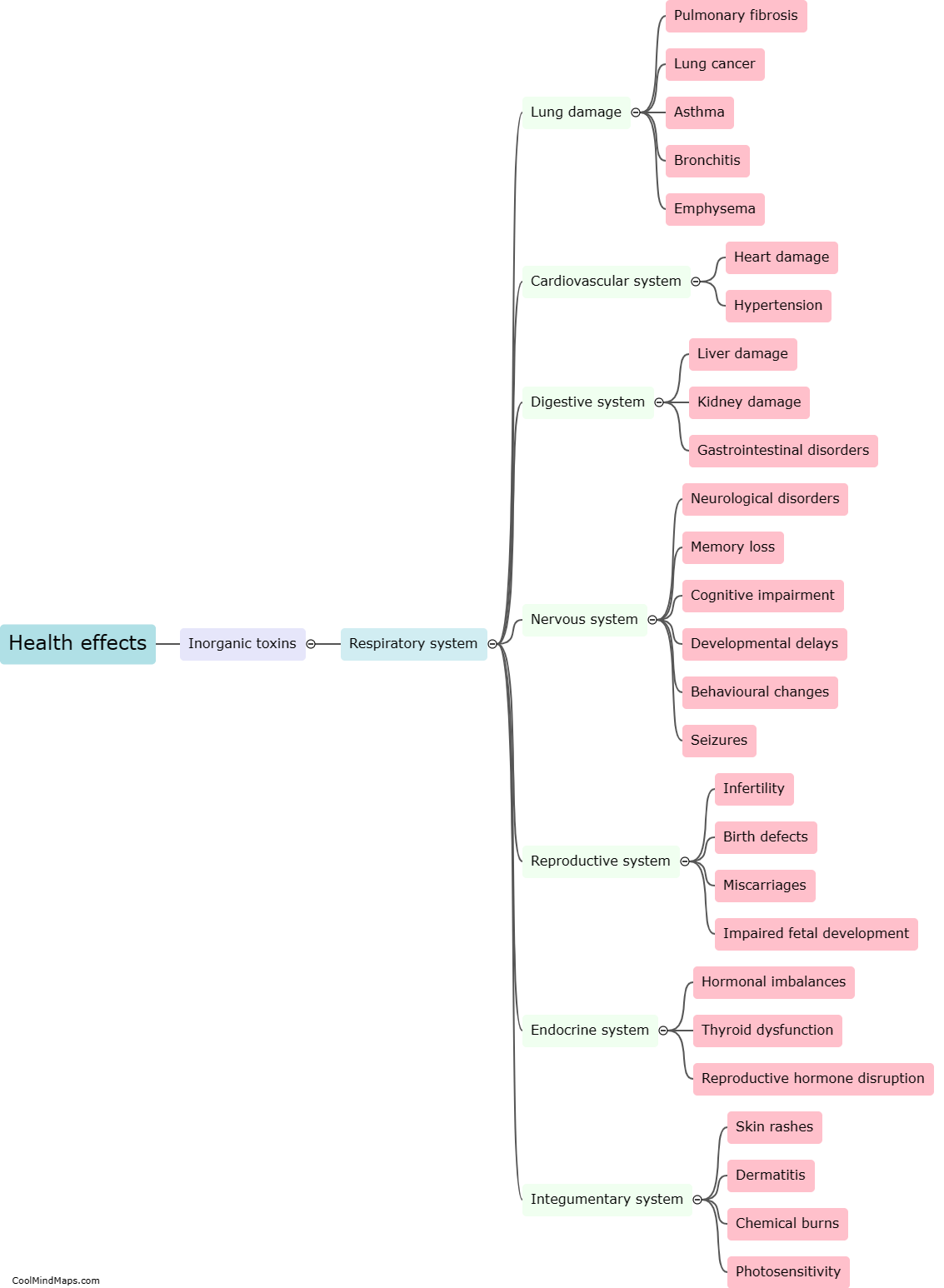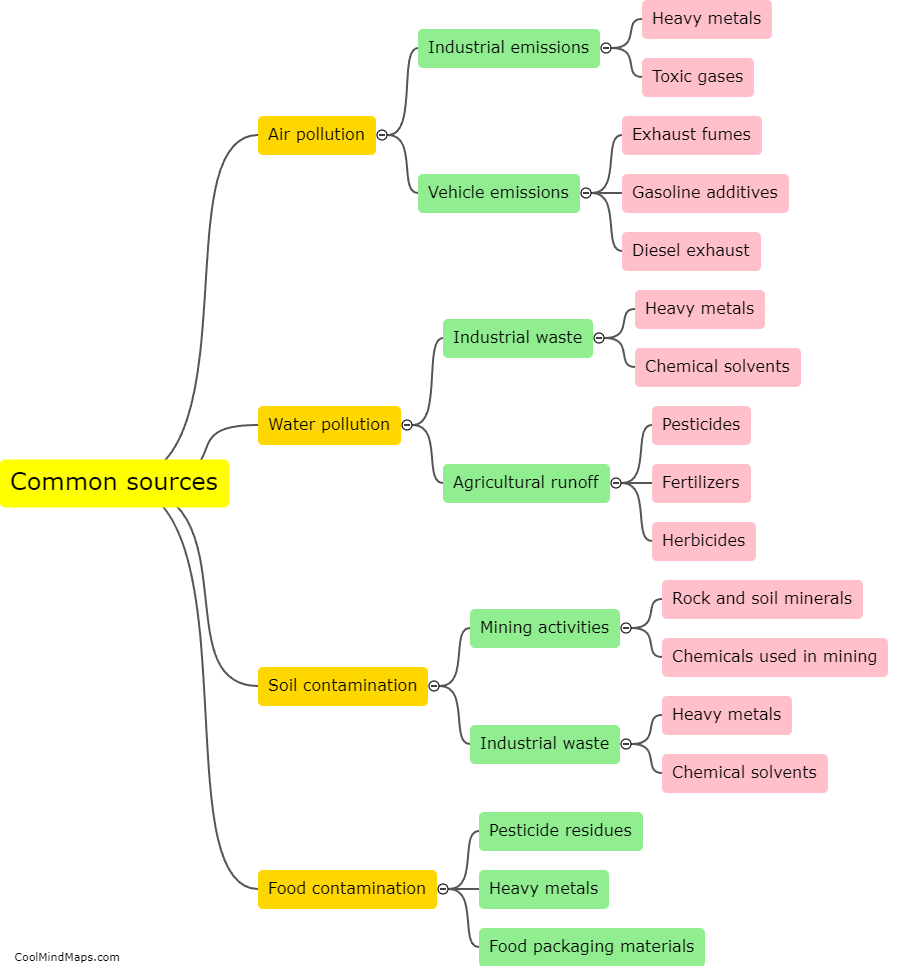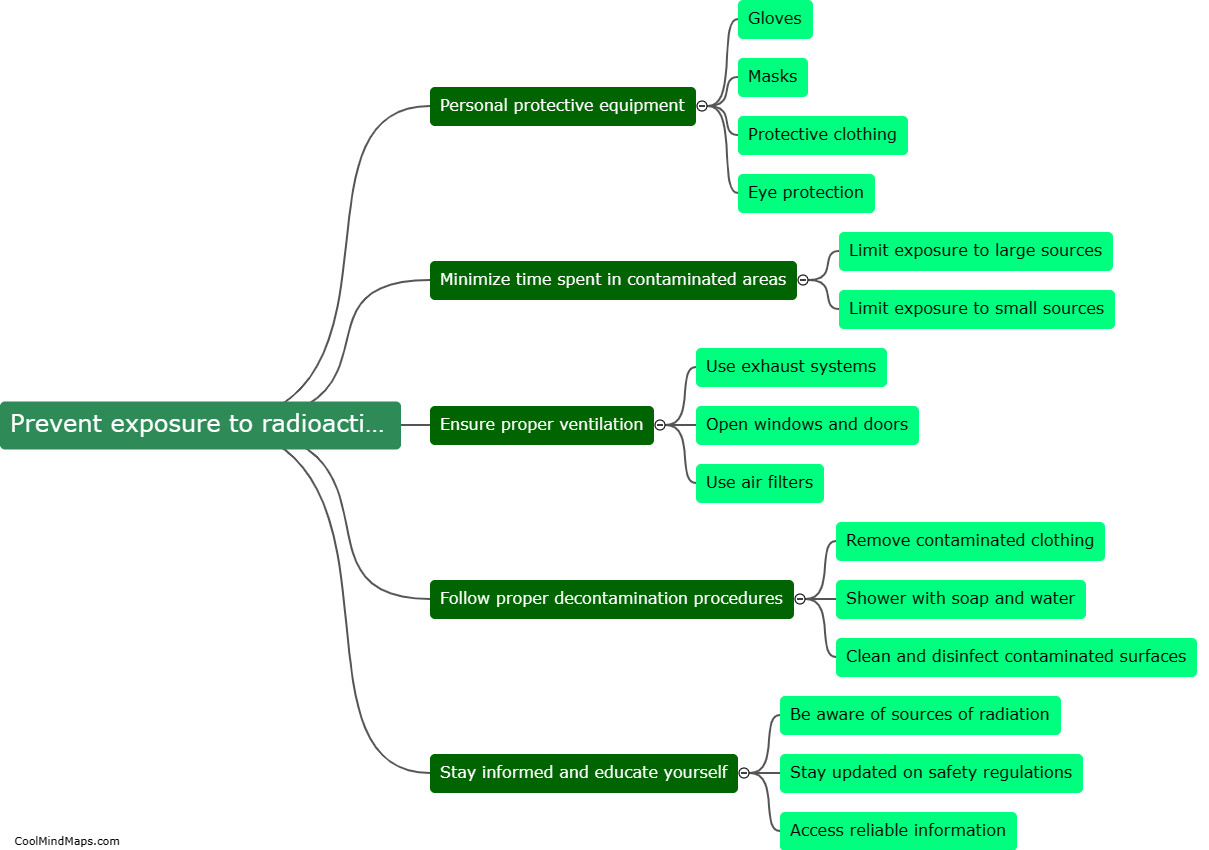How can we detect and measure radioactive toxins?
Detecting and measuring radioactive toxins is crucial in ensuring the safety of both the environment and human health. One common method for detection is through the use of specialized instruments such as Geiger-Muller counters, which measure the level of ionizing radiation emitted by radioactive materials. Another widely used technique is gamma-ray spectroscopy, which involves analyzing the energy levels and intensities of gamma rays emitted by radioactive substances. Additionally, scintillation detectors use materials that emit light when exposed to radiation, allowing for the measurement of radiation levels. These methods provide valuable information for monitoring and controlling the presence of radioactive toxins, allowing for effective remediation and protection of individuals and the environment.
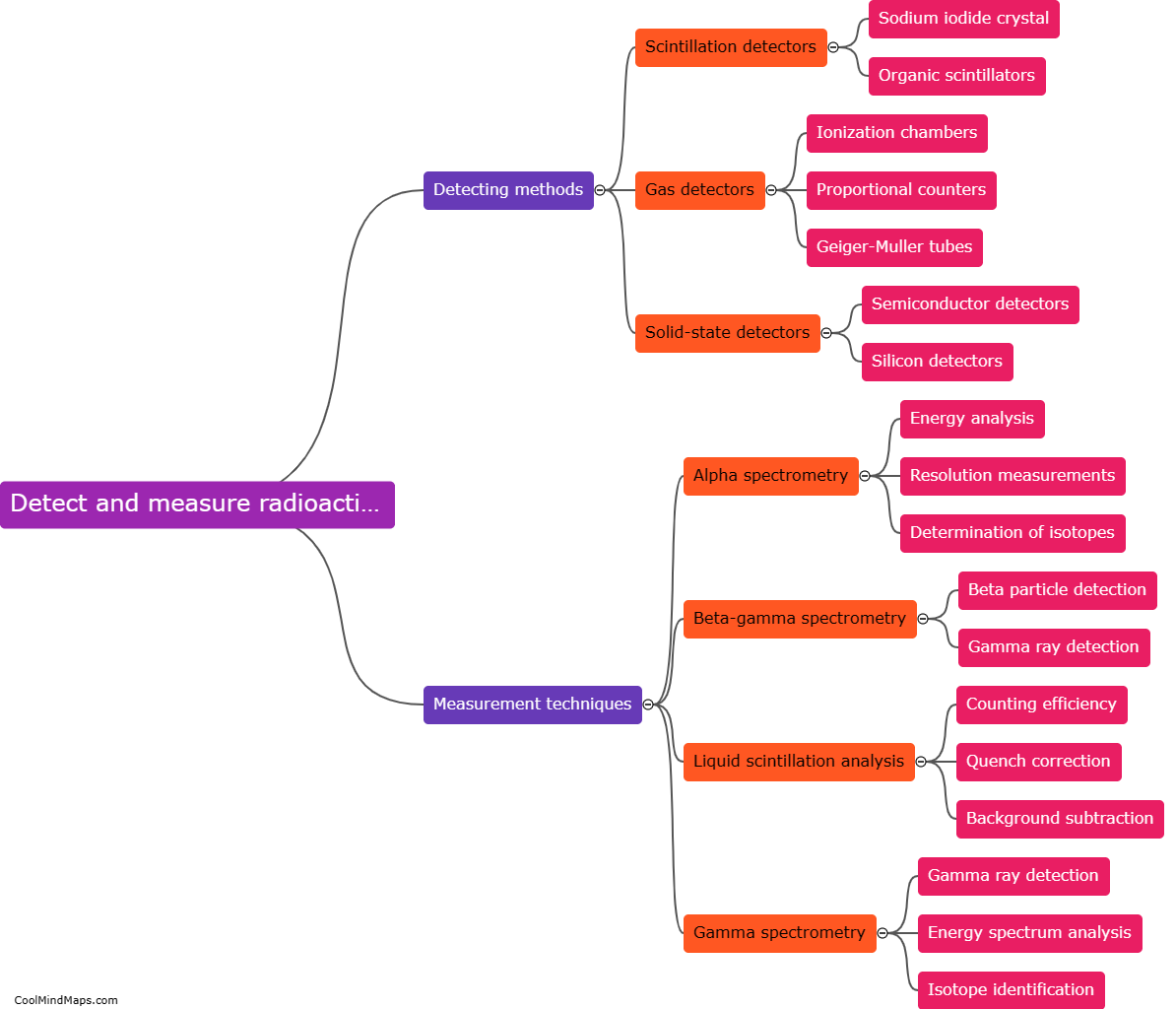
This mind map was published on 3 December 2023 and has been viewed 104 times.

